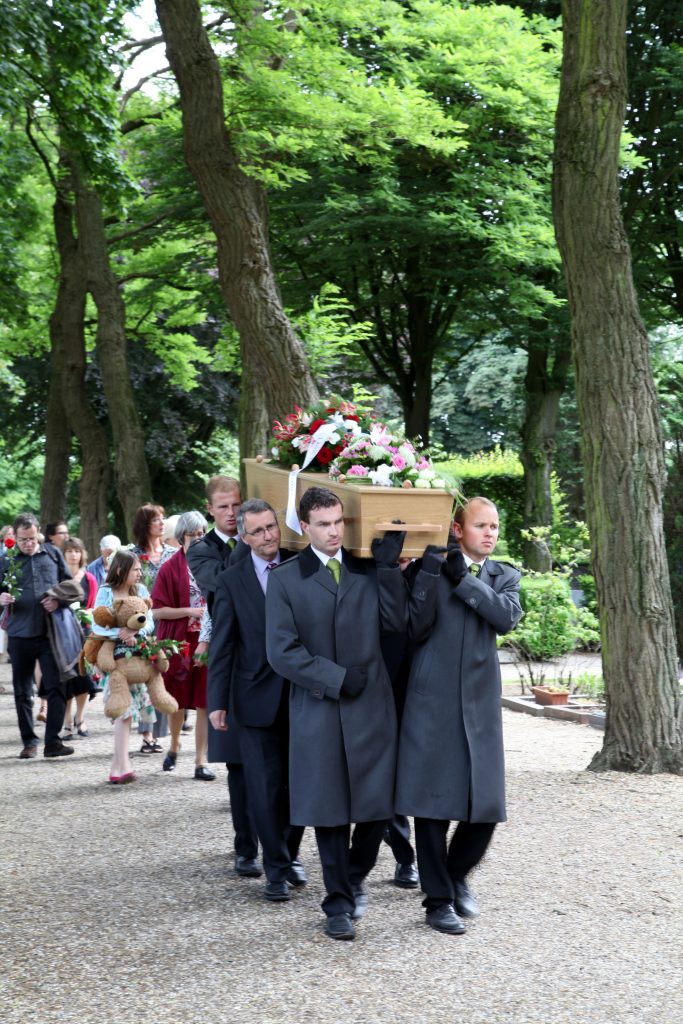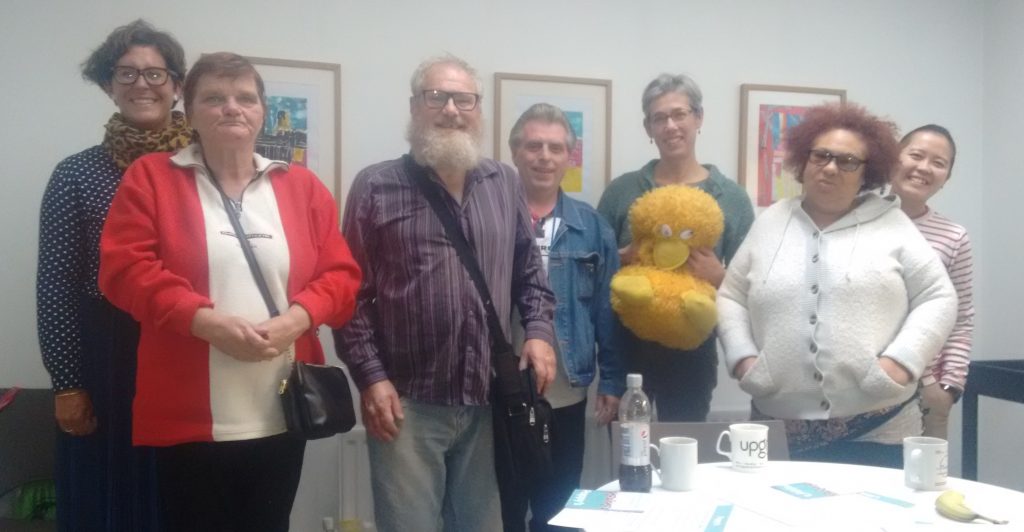There’s quite a drive these days to make sure that people do a bit of funeral planning. Including people with learning disabilities. Do you want to be buried or cremated? Do you want flowers? Music? A church service?
There are easy-read documents that can be used as templates for funeral planning, such as When I Die or What If… Celebrating My Life
I’m a great fan of funeral planning.
The trouble is, when it comes to my own, I keep changing my mind. Even the burial/cremation preference has a tendency to change with each wonderful or less-than-wonderful funeral I go to.
But I do have the advantage of having been to very many funerals. Plus, in my hospice nursing days, I was sent on a course that involved visiting funeral parlours, nosing around the local crematorium and generally having all questions answered and myths busted.
But even knowing what all the options are, it’s not straightforward to plan your own funeral. For starters, what might be the wishes of those left behind? What if I specify tea & cake afterwards, but they would have liked to raise a glass of bubbly? What if I opt for cremation but they would love to visit a grave? This is why I haven’t written anything down. I’m not ready for an easy-read funeral plan, because they require straightforward answers, and I don’t have them. I’d rather think about funerals with my family when it comes up in conversation (and yes, it does, regularly enough), and I trust that when the time comes, my family will do whatever is good for them and, by implication, for me.
GRASSroots
Two and a half years ago, we set up the GRASSroots group, a local group of people with learning disabilities. We spend a Thursday afternoon drinking tea and eating biscuits/grapes/bananas whilst talking about death and dying. Every month. We have shared the stories of the people we have loved and who have died, again and again and again.
The people in the group are perfectly capable of understanding that they, too, will die one day.
But it’s only now, after 24 meetings, that they felt ready to invite a funeral director. I suggested it a year ago, but it didn’t make the top five of Good Ideas (at that time, visiting a hospice came top – which we duly did). This autumn, however, the idea of finding out more about funerals struck a chord with the group. We found Isabelle and Elizabeth from Poppy’s Funerals, based at the cemetery down the road (look them up, they are absolutely lovely), who were delighted to answer our questions.

Talking about funerals made me think of my mother’s funeral in 2014
Before they turned up, we spent an hour talking together about the funerals we remember, how we feel about funerals, what is good and what is difficult. Listening to each other, we learned how different funerals can be. Mothers, grandmothers, partners, somebody’s beloved dog. Burials, cremations. That strange moment when the curtains close and you have to walk away. Could you go and see what happens behind that curtain? What happens with the coffin?
These are not just questions from the people with learning disabilities.
We all had lots of questions. Here are some of them. Would you know the answers? And what would you like to know?
1. What is embalming?
2. What makes funerals expensive?
3. What is inside the oven – is it flames?
4. Can you put everything in the oven, including jewellery and photos?
5. How long does a body burn?
6. What is left after the body has burnt? Are there bones?
7. Can you be buried in your garden?
8. Where does the spirit go?
At this stage, I must own up to a hidden agenda.
Part of the reason I started this group is that I need more people with learning disabilities to help and advise me on my research projects. In order to advise on our “Talking About Dying Survey”, people must be able to, well, talk about dying. That evokes memories of the deaths in our lives, so we must talk about those first (as I said: again, and again, and again).
Some of the group members have become excellent research advisors. Others prefer just to come and talk, or even just to listen – some members do not say very much, but faithfully turn up every month. One such quiet member says the meetings are “very interesting”, although death and funerals are “not the cheeriest of subjects”.
I am hoping to do more research into the processes of shared end-of-life decision making with people with learning disabilities. Evaluating the available materials (including easy-read funeral plans) will be part of that, so it would be quite good if I had a group of local people who were able to do that.
Surely, having spent two and a half years talking about dying, and now a whole afternoon asking questions about funerals, people might want to begin to think about their own? How about looking at some of these easy-read documents?
But no: this suggestion was met with a reluctant silence. Instead, people jumped at Isabelle’s invitation to come and visit Poppy’s Funeral parlour. Have a look around, ask more questions, have a look at the cemetery. So that’s what we’ll do next month.
I’m sure we all agree that people have a right to be involved in planning their own funeral, but how to do it?
And is it actually what they want to do? I am left wondering whether it’s not so much “writing down your funeral wishes” that matters, but the ability to talk together about funerals and to ask questions. And the opportunity to be involved in planning the funerals of those we love. I don’t think this happens enough.
In our Talking About Dying Survey, staff reported that out of 184 people with learning disabilities who had been recently bereaved, 119 had attended the funeral – but only 27 had been involved in planning or preparing the funeral in any way. For roughly half of the bereaved people, it was a parent who had died, so this finding is interesting. When my mother died, it was obvious that I needed to be involved in planning her funeral, despite living in a different country and being rather ill at the time. So were my teenage children, who did readings, made music and helped carry Oma (Grandma) in her coffin, which contained a thank-you note from the three of them. Being involved in funeral planning is not only an important part of grieving, but also helps to learn what the funeral choices are.
What was wonderful about the GRASSroots meeting was discovering, once again, that the emotions around deaths and funerals affect all of us, whether we have learning disabilities or not. (One person cried when she talked about a personal experience. It was the funeral director.)
And whilst we had many of our questions answered, being a funeral director (or indeed a professor) was no help when it came to life’s biggest questions.
Where does the spirit go?

Isabelle from Poppy’s Funerals (far left) with members of the GRASSroots group
Just in case you are wondering: here are the answers.
1. What is embalming? Draining the dead body of blood, and replacing it with chemicals. Like a preservative that stops the body from “going off”. (Although it is perfectly possible to keep a body in good condition, even at home, without embalming. The funeral director mentioned ice packs.)
2. What makes funerals expensive? Limousines, hearse, fancy coffins. None if this is necessary (you could indeed take the coffin to the funeral in your own car, if it fits.)
3. What is inside the oven – is it flames? No, it’s simply an extremely hot place. Hot enough to make the coffin burst into flames.
4. Can you put everything in the oven, including jewellery and photos? Yes, although usually there won’t be anything left of the jewellery. Glass is best avoided, so photos should just be plain or in a simple wooden frame. Flowers are usually taken off the coffin, because they create too much smoke.
5. How long does a body burn? Two to three hours.
6. What is left after the body has burnt? Are there bones? The only thing left are some pieces of the largest bones in the body. Sometimes there are some bits of metal left (for example, a hip replacement). Everything is scraped out of the oven and cooled down. The metal bits are taken out. The bones are put through a grinder, to make “ashes”.
7. Can you be buried in your garden? Yes, if you own the garden, and it’s not too close to water (but you need to get the right permission)
8. Where does the spirit go? …?????

Pingback: Does my mum know she’s died? |
Hello, its nice paragraph on the topic of media print, we all understand media is a wonderful source
of information.
Pingback: End-of-life care planning and people with learning disabilities (PART 1) |